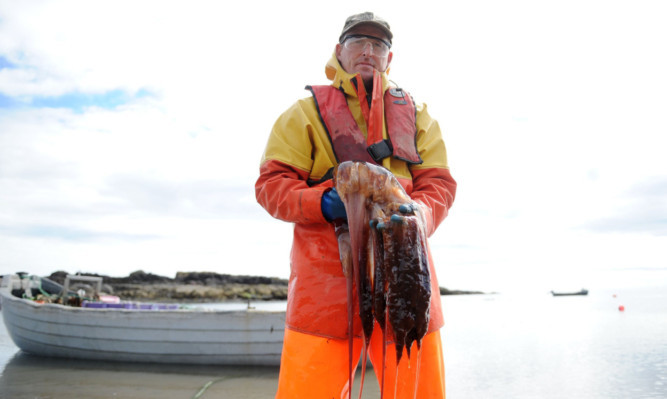An explosion in jellyfish numbers is threatening the viability of an Angus fishery business.
Usan Salmon Fisheries near Montrose has been blighted by an sharp increase in the invertebrates following an unexplained summer influx around the UK.
Director George Pullar claimed the nuisance is only adding to the woes of fishermen already struggling with “outdated” legislation, the effects of climate change and increasingly unpredictable weather.
Nets used for catching fresh fish are being clogged with jellyfish as their numbers soar from John o’ Groats to the English Channel. Experts at the Marine Conservation Society have suggested the sudden expansion could be down to the recent hike in temperatures.
Mr Pullar took some photographs of his unwanted haul after taking to sea last week. He said numbers have been on the increase over the last few years, but nothing compares to this year’s mass appearance.
“The effects the jellyfish have on our business are profound,” Mr Pullar said.
“They effectively choke our nets, rendering them inoperable and present a significant health and safety issue for our crew.
“Quite apart from the more obvious sting hazards, they are extremely heavy, particularly in large volumes and represent a huge logistical challenge in terms of moving, handling and cleaning our fishing gear.”
A 10-year survey of jellyfish had noted a quiet year until the start of June when sightings began to stack up.
Several species including the Lion’s Mane, which is capable of a powerful sting, are being reported in rapidly growing numbers off the Angus coast.
Mr Pullar said his crew are struggling to cope with pulling in the additional load and the subsequent mess while trying to maintain a living.
“When you consider that each jellyfish could weigh 12kg and multiply this by the hundreds we see in our nets at any given time, you start to get an idea of the scale of the problem.
“This has the unfortunate knock-on effect of making it incredibly difficult for us to comply with the outdated Weekly Close Time legislation, when we have to remove our salmon net leaders by 6pm on a Friday.
“These regulations simply take no account of the wide range of environmental factors we have to contend with when running our business.”
There are competing views on the increasing numbers of jellyfish, with some evidence pointing to pollution which drives up algae and deprives the seas of oxygen. Those conditions spell bad news for shellfish but allow jellyfish to thrive.
Some scientists say the phenomenon is a natural 20-year cycle that continually sees the rapid growth and die-off of jellyfish.
